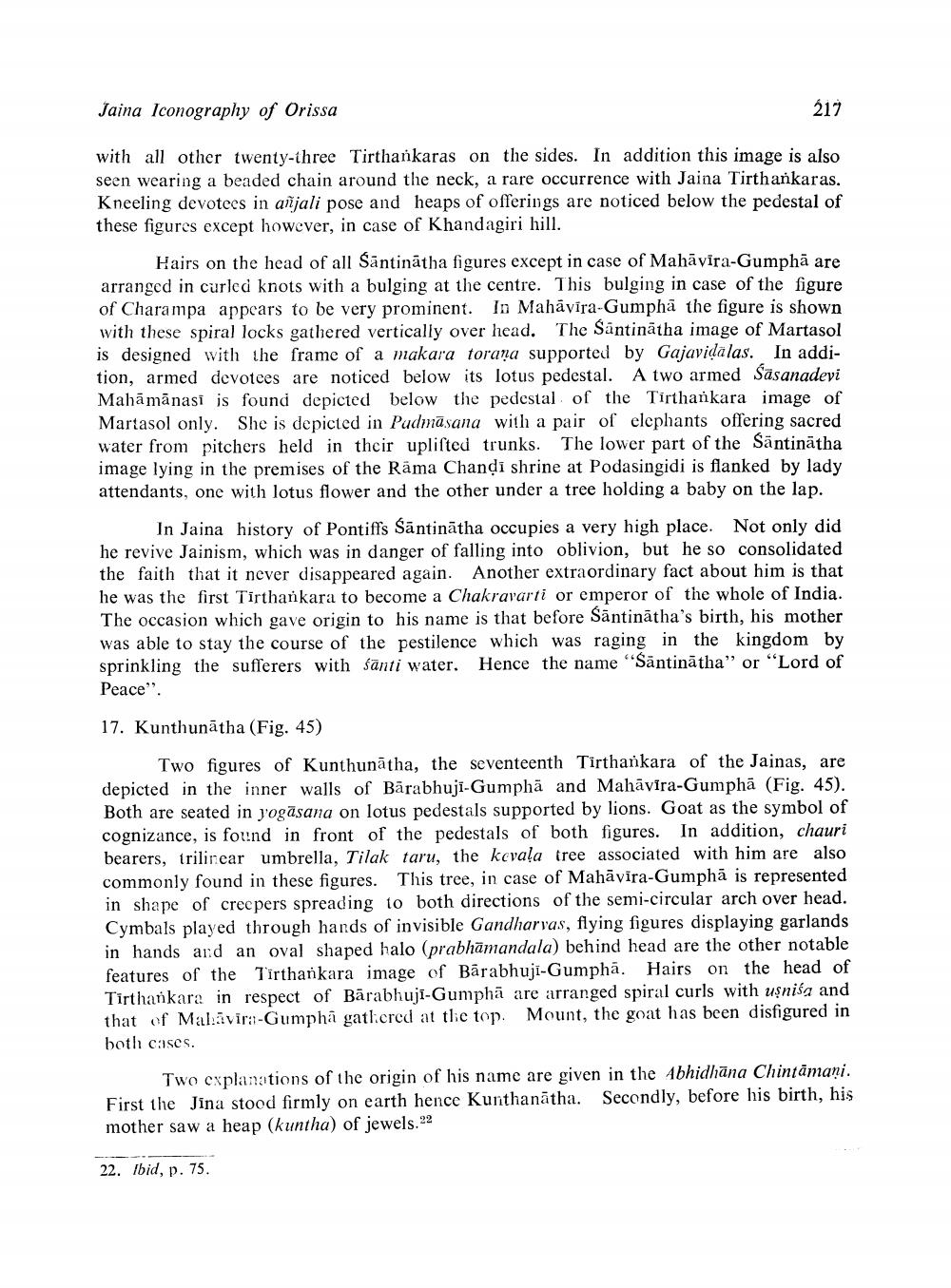________________
Jaina Iconography of Orissa
217
with all other twenty-three Tirthankaras on the sides. In addition this image is also. seen wearing a beaded chain around the neck, a rare occurrence with Jaina Tirthankaras. Kneeling devotees in anjali pose and heaps of offerings are noticed below the pedestal of these figures except however, in case of Khandagiri hill.
Hairs on the head of all Santinatha figures except in case of Mahavira-Gumphå are arranged in curled knots with a bulging at the centre. This bulging in case of the figure of Charampa appears to be very prominent. In Mahavira-Gumpha the figure is shown. with these spiral locks gathered vertically over head. The Sântinätha image of Martasol is designed with the frame of a makara toraya supported by Gajavīdalas. In addition, armed devotees are noticed below its lotus pedestal. A two armed Sasanaderi Mahāmānasi is found depicted below the pedestal of the Tirthankara image of Martasol only. She is depicted in Padmasana with a pair of elephants offering sacred water from pitchers held in their uplifted trunks. The lower part of the Santinatha image lying in the premises of the Rama Chandi shrine at Podasingidi is flanked by lady. attendants, one with lotus flower and the other under a tree holding a baby on the lap.
In Jaina history of Pontiffs Santinatha occupies a very high place. Not only did he revive Jainism, which was in danger of falling into oblivion, but he so consolidated the faith that it never disappeared again. Another extraordinary fact about him is that he was the first Tirthankara to become a Chakravarti or emperor of the whole of India. The occasion which gave origin to his name is that before Santinatha's birth, his mother was able to stay the course of the pestilence which was raging in the kingdom by sprinkling the sufferers with santi water. Hence the name "Santinatha" or "Lord of Peace".
17. Kunthunatha (Fig. 45)
Two figures of Kunthunatha, the seventeenth Tirthankara of the Jainas, are depicted in the inner walls of Barabhuji-Gumpha and Mahavira-Gumpha (Fig. 45). Both are seated in yogasana on lotus pedestals supported by lions. Goat as the symbol of cognizance, is found in front of the pedestals of both figures. In addition, chauri bearers, trilinear umbrella, Tilak taru, the kevala tree associated with him are also commonly found in these figures. This tree, in case of Mahavira-Gumpha is represented in shape of creepers spreading to both directions of the semi-circular arch over head. Cymbals played through hands of invisible Gandharvas, flying figures displaying garlands. in hands and an oval shaped halo (prabhamandala) behind head are the other notable features of the Tirthankara image of Barabhujt-Gumphå. Hairs on the head of Tirthankara in respect of Barabhuji-Gumpha are arranged spiral curls with ugnia and that of Malvir:-Gumphâ gathered at the top. Mount, the goat has been disfigured in both cases.
Two explanations of the origin of his name are given in the Abhidhana Chintamani. First the Jina stood firmly on earth hence Kunthanatha. Secondly, before his birth, his mother saw a heap (kuntha) of jewels. 22
22. Ibid, p. 75.




